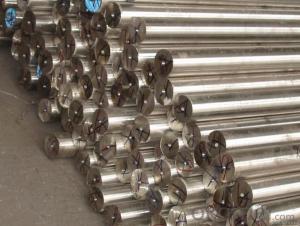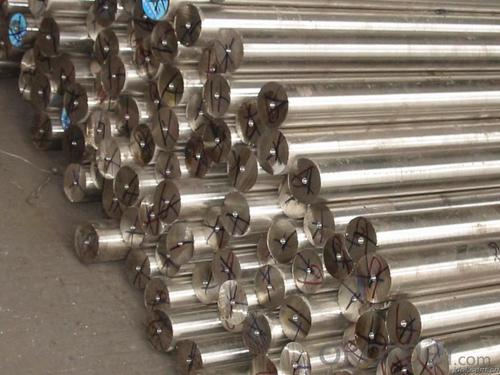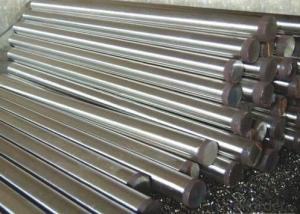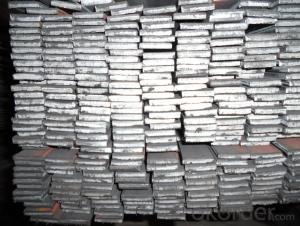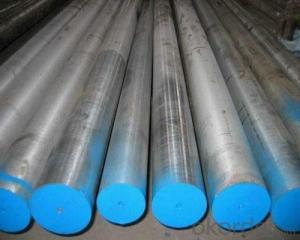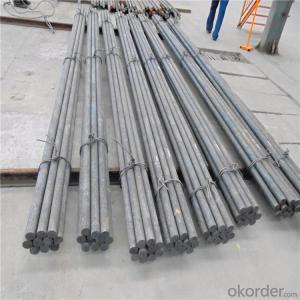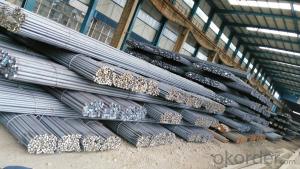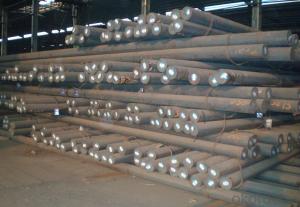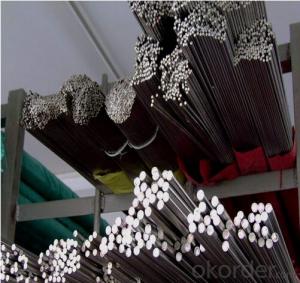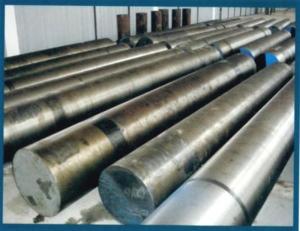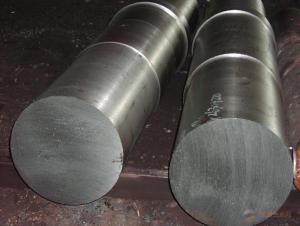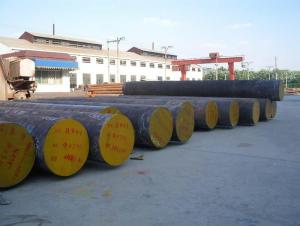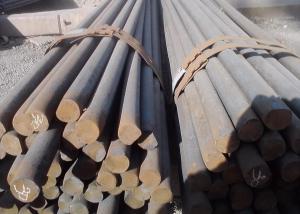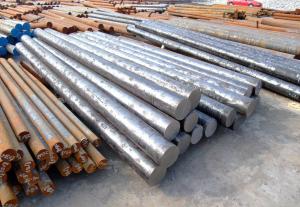Forged 1.2436 Tool Steel,D6 Steel Round Bar
- Loading Port:
- China main port
- Payment Terms:
- TT OR LC
- Min Order Qty:
- 25 m.t.
- Supply Capability:
- 10000 m.t./month
OKorder Service Pledge
OKorder Financial Service
You Might Also Like
Specification
Forged 1.2436 tool steel,D6 Steel Round Bar
Grade: X210CrW12/1.2436/SKD2/D6
Chemical composition:
Standard | Chemical composition | C | Si | Mn | S | P | Cr | Ni |
DIN |
% | 2.00/ 2.25 | 0.10/ 0.40 | 0.15/ 0.45 | ≤ 0.030 | ≤ 0.030 | 11.00/ 12.00 | 0.60/ 0.80 |
Size:
Round bar | Diameter (mm) | Length (mm) | |
50~500 | 2000~5800 | ||
plate/sheet | Thickness (mm) | Width (mm) | Length (mm) |
20~400 | 80~1000 | 2000~5800 |
Surface treatment :
Round bar : Black /Grinding / Polished / Peeled / Turned
Steel plate : Black / Milling / Machined
Characteristic:
1. High carbon and high chromium,
2. Dimensionally stable and ledeburitic 12 % Cr alloyed cold work tool steel
3. Non-deforming, low distorsion and better hardenability
4. High compressive strength and high surface hardness after hardening
Application:
1.2436 is for making high performance cutting, blanking tools up to 4 mm sheet thickness,
woodworking tools, thread rolling dies, deep drawing and cold extrusion tools, measuring tools,
scraping and trimming tools, deburing tools, moulds for abrasive plastics.
Business Terms
Lead time: 40 days after contract
Port of unloading : Shanghai/Wuhan/Ningbo
Productivity: 4000 metric ton per month
Marketing : America/Asia/Europe
Product show:
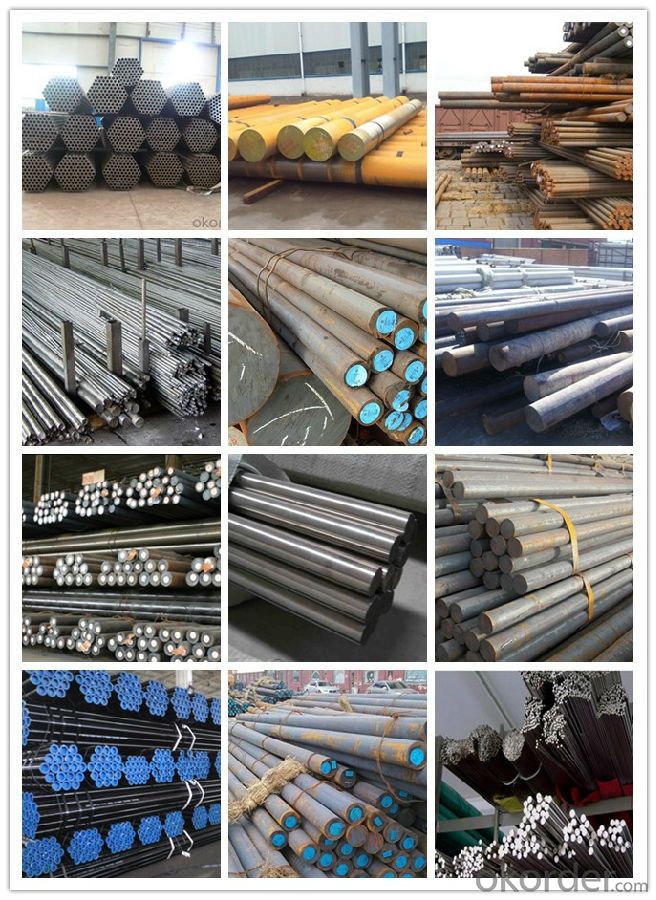
Workshop show:
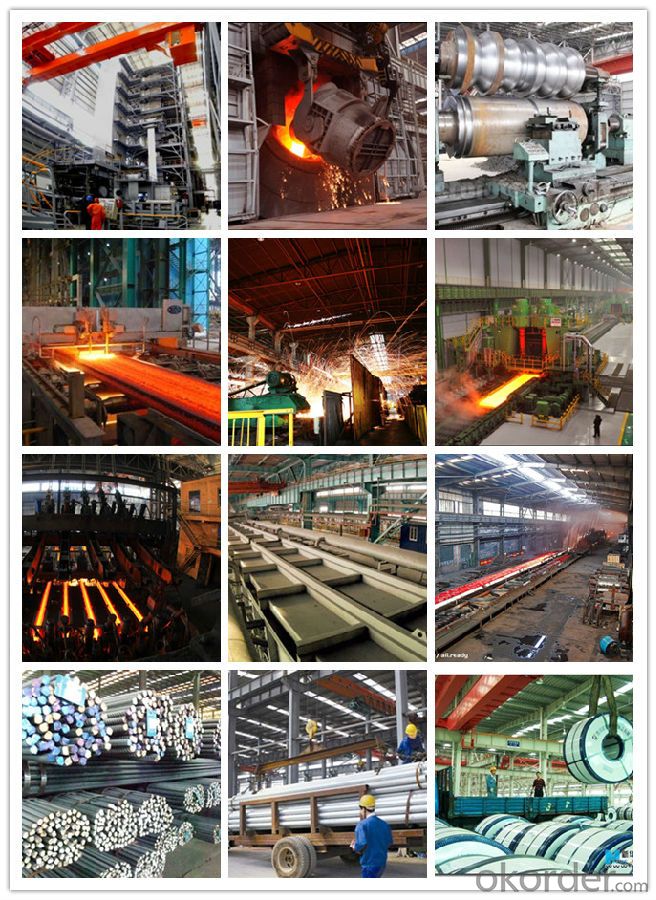
FAQ:
1, Your advantages?
professional products inquiry, products knowledge train (for agents), smooth goods delivery, excellent customer solution proposale
2, Test & Certificate?
SGS test is available, customer inspection before shipping is welcome, third party inspection is no problem
3, Payment Terms?
30% TT as deposit and 70% before delivery.
Irrevocable L/C at sight.
4, Trading Terms?
EXW, FOB, CIF, FFR, CNF
5, After-sale Service?
We provides the services and support you need for every step of our cooperation. We're the business partner you can trust.
For any problem, please kindly contact us at any your convenient time.
We'll reply you in our first priority within 24 hours.
- Q: How is shock-resistant alloy steel used in the production of impact-resistant parts?
- Shock-resistant alloy steel is used in the production of impact-resistant parts to enhance their durability and toughness. This type of steel is specifically designed to withstand high impact forces, making it ideal for applications where parts are subjected to intense shock or sudden impact loads. By incorporating shock-resistant alloy steel into the manufacturing process, impact-resistant parts can better absorb and distribute the energy from impacts, thereby reducing the risk of damage or failure.
- Q: What are the standards and certifications for special steel?
- Some of the standards and certifications for special steel include ISO 9001 for quality management systems, ISO 14001 for environmental management systems, and ISO 45001 for occupational health and safety management systems. Additionally, there are various industry-specific standards such as ASTM International, EN standards, and JIS standards that provide specifications and testing requirements for different types of special steel. These standards and certifications ensure that the special steel meets specific quality, safety, and environmental standards, and helps to establish trust and credibility in the industry.
- Q: How does special steel perform in cryogenic environments?
- The performance of special steel in cryogenic environments is exceptional. Cryogenic temperatures, which are temperatures below -150°C (-238°F), require materials that can withstand and excel in such extreme conditions. Special steel is specifically designed to possess these qualities. One of the key characteristics of special steel is its ability to maintain its strength and toughness even in low temperatures. Unlike other materials that become brittle and prone to fractures in cryogenic environments, special steel retains its mechanical properties, ensuring the structural integrity and reliability of equipment or structures. This is particularly important in industries where safety is of utmost importance, such as aerospace and nuclear. Furthermore, special steel exhibits excellent resistance to corrosion and oxidation, even at cryogenic temperatures. This resistance is crucial as cryogenic environments often involve the presence of gases, liquids, or chemicals that can accelerate corrosion. By resisting corrosion, special steel ensures its longevity and minimizes the risk of material degradation, thereby enhancing the overall performance and lifespan of equipment or structures. Apart from its mechanical and corrosion-resistant properties, special steel also possesses good thermal conductivity. This property enables efficient heat transfer, which is critical in cryogenic environments where temperature control and management are vital. Special steel's ability to efficiently conduct heat ensures that equipment and structures remain at the desired low temperatures without any significant thermal variations. Moreover, the suitability of special steel for cryogenic environments is evident in its wide range of applications. It is commonly used in cryogenic storage tanks for liquefied gases like liquid oxygen, nitrogen, and argon. It is also utilized in the construction of cryogenic pipelines, valves, and other components, where its exceptional performance guarantees the safe transport and containment of cryogenic fluids. In conclusion, special steel performs exceptionally well in cryogenic environments due to its retained strength and toughness, resistance to corrosion, good thermal conductivity, and wide range of applications. Its ability to withstand extreme cold temperatures makes it a reliable and preferred choice for various industries that require dependable performance in cryogenic conditions.
- Q: How does special steel contribute to reducing product rejection rates?
- Special steel contributes to reducing product rejection rates by offering superior quality and performance compared to regular steel. Its unique properties, such as increased strength, durability, and corrosion resistance, ensure that products made with special steel are more reliable and less prone to defects or failures. This, in turn, leads to a decrease in product rejection rates as it minimizes the likelihood of manufacturing errors, enhances product lifespan, and improves overall customer satisfaction.
- Q: How does special steel perform in low-temperature environments?
- Special steel, also known as low-temperature steel, is specifically designed to perform exceptionally well in low-temperature environments. One of the key features of special steel is its ability to maintain its strength and toughness even at extremely low temperatures. This is crucial in industries such as oil and gas, where equipment and structures are exposed to extreme cold conditions. When exposed to low temperatures, regular steel tends to become brittle and lose its mechanical properties, making it prone to cracking and failure. However, special steel is formulated with specific alloying elements, such as nickel, chromium, and molybdenum, which enhance its low-temperature performance. These alloying elements help to prevent the formation of brittle phases, which allows the steel to retain its toughness and ductility even at sub-zero temperatures. Special steel is extensively used in cryogenic applications, where temperatures can reach as low as -196 degrees Celsius (-320 degrees Fahrenheit). It is commonly employed in the construction of cryogenic storage tanks, liquefied natural gas (LNG) carriers, and other components that come into contact with extremely cold fluids or gases. In low-temperature environments, special steel not only maintains its mechanical properties but also exhibits excellent resistance to corrosion. This is vital, as low temperatures can exacerbate corrosion issues in many materials. The corrosion resistance of special steel is attributed to its high nickel content, which forms a protective oxide layer that prevents the steel from corroding, even in harsh conditions. Overall, special steel is specifically engineered to withstand the challenges posed by low-temperature environments. Its ability to retain strength, toughness, and corrosion resistance makes it an ideal choice for various industries operating in extreme cold conditions.
- Q: What are the different methods of improving the fatigue resistance of special steel?
- Improving the fatigue resistance of special steel can be achieved through various methods. These methods aim to enhance the material's ability to withstand cyclic loading and prevent fatigue failure. One method commonly employed is heat treatment. Through processes like annealing, normalizing, or quenching and tempering, the special steel undergoes changes in its microstructure, resulting in improved strength, toughness, and fatigue resistance. Surface treatment is another effective approach. Techniques such as shot peening or surface hardening can significantly enhance the fatigue resistance of special steel. Shot peening involves bombarding the surface with high-velocity steel shots to induce compressive stresses that counteract tensile stresses during cyclic loading. Surface hardening methods, like carburizing or nitriding, create a hardened layer on the steel's surface, increasing its resistance to fatigue. Modifying the composition of the special steel through alloying is another way to enhance fatigue resistance. By adding specific alloying elements like chromium, molybdenum, or nickel, the material's strength, ductility, and resistance to fatigue crack initiation and propagation can be greatly improved. Grain refinement is also crucial for improving fatigue resistance. Techniques such as severe plastic deformation or thermomechanical processing can promote the formation of finer grains in the special steel. This reduces its susceptibility to fatigue crack initiation and propagation. Optimizing the microstructure of the special steel is achievable through techniques like controlled rolling, controlled cooling, or precipitation hardening. These methods aim to achieve a desirable microstructural balance, such as fine dispersion of precipitates or a refined grain structure, which improves the material's fatigue resistance. Managing residual stresses within the special steel is another important aspect. Techniques like stress relieving or balancing residual stresses through appropriate heat treatment can reduce the likelihood of fatigue crack initiation and propagation. It is important to consider that the specific method or combination of methods used to enhance fatigue resistance will depend on the specific alloy and application requirements. Thorough testing and evaluation should be conducted to ensure the effectiveness of these methods in improving the fatigue resistance of special steel.
- Q: How does special steel meet the requirements of specific industries?
- Special steel meets the requirements of specific industries by offering superior mechanical properties, corrosion resistance, and heat resistance, which are essential for various applications. Its tailored composition and precise manufacturing processes ensure the steel can withstand extreme conditions, such as high temperatures, pressure, and harsh environments. Additionally, the versatility of special steel allows for customization to meet specific industry needs, resulting in enhanced performance, durability, and overall efficiency.
- Q: What are the different welding techniques for special steel?
- There are several different welding techniques that can be used for special steel, depending on the specific requirements and characteristics of the steel. Some of the commonly used welding techniques for special steel include: 1. Shielded Metal Arc Welding (SMAW): Also known as stick welding, SMAW uses a consumable electrode coated in flux to create an arc between the electrode and the base metal. This technique is versatile and can be used for a wide range of steel types, including special steel. 2. Gas Metal Arc Welding (GMAW): Also known as MIG (Metal Inert Gas) welding, GMAW uses a continuous solid wire electrode and a shielding gas to protect the weld from atmospheric contamination. This technique is commonly used for thinner special steel materials. 3. Flux-Cored Arc Welding (FCAW): Similar to GMAW, FCAW uses a continuous tubular electrode filled with flux. This flux provides additional shielding and can allow for higher deposition rates. FCAW is suitable for special steel with thick sections or when welding in outdoor or windy conditions. 4. Gas Tungsten Arc Welding (GTAW): Also known as TIG (Tungsten Inert Gas) welding, GTAW uses a non-consumable tungsten electrode and a shielding gas. This technique is known for its precision and is often used for special steel alloys that require high-quality and aesthetically pleasing welds. 5. Plasma Arc Welding (PAW): PAW is similar to GTAW but uses a more focused arc created by passing gas through a constricted nozzle. This technique is often used for special steel alloys that have higher melting temperatures or require deeper penetration. 6. Submerged Arc Welding (SAW): SAW involves feeding a continuous wire electrode into a molten flux layer that covers the weld. This technique is commonly used for heavy and thick special steel sections, as it provides excellent penetration and high deposition rates. It is important to choose the most appropriate welding technique for special steel based on factors such as the steel composition, thickness, intended application, and desired weld quality. Consulting with a qualified welding professional or referring to the steel manufacturer's recommendations can help ensure the best welding technique is selected for the specific special steel being used.
- Q: What are the different renewable energy grades of special steel?
- There are several grades of special steel that are commonly used in the renewable energy industry. These grades are specifically designed to withstand the harsh conditions and requirements of renewable energy applications. One of the most common grades of special steel used in renewable energy is stainless steel. Stainless steel is known for its corrosion resistance properties, which make it ideal for offshore wind turbines or solar panel frames that are exposed to moisture and saltwater. It is also used in geothermal power plants, where high temperatures and corrosive environments are present. Another grade of special steel used in renewable energy is high-strength low-alloy (HSLA) steel. HSLA steel has a higher strength-to-weight ratio, making it suitable for applications that require lightweight structures with high strength, such as wind turbine towers or support structures for solar panels. Furthermore, there is advanced high-strength steel (AHSS) that is commonly used in the automotive industry but can also be utilized in renewable energy applications. AHSS offers excellent strength, durability, and impact resistance, making it suitable for components like blades or gears in wind turbines. Additionally, there is a grade of steel called weathering steel, which is often used in renewable energy applications that are exposed to outdoor elements. Weathering steel forms a protective layer of rust, which prevents further corrosion and eliminates the need for additional coatings. It is commonly used in solar panel support structures, transmission towers, or other outdoor equipment. Overall, the selection of the appropriate grade of special steel for a specific renewable energy application depends on factors such as the type of renewable energy source, the environment in which it will be installed, and the specific requirements of the project.
- Q: How does special steel perform in high-vibration applications?
- Special steel is known for its excellent performance in high-vibration applications. Its unique composition and properties make it highly resistant to the effects of vibration, ensuring optimal performance and durability in such environments. One of the key features of special steel is its high tensile strength. This strength allows it to withstand the forces and stresses generated by vibration without undergoing deformation or failure. This property is vital in high-vibration applications, where constant movement and oscillation can subject materials to significant stress. Moreover, special steel exhibits exceptional fatigue strength, meaning it can endure repeated cycles of stress and vibration without compromising its structural integrity. This makes it ideal for applications that involve continuous or cyclic vibration, such as machinery, equipment, and structures subjected to dynamic loads. Additionally, special steel possesses excellent damping properties. Damping refers to the ability of a material to absorb and dissipate energy generated by vibrations. Special steel's superior damping characteristics help reduce the magnitude and duration of vibrations, minimizing the impact on the surrounding components and structures. This contributes to overall system stability and reduces the risk of fatigue or premature failure. Furthermore, special steel is often engineered to have high resistance to corrosion and wear. This resistance ensures that the material remains robust and reliable even in harsh environments where vibration-induced corrosion or erosion may occur. By maintaining its protective coating and integrity, special steel can effectively withstand the challenges posed by high-vibration applications. In summary, special steel performs exceptionally well in high-vibration applications due to its high tensile strength, fatigue resistance, damping properties, and corrosion/wear resistance. Its combination of these properties ensures optimal performance, longevity, and safety in environments characterized by significant vibration and dynamic loads.
Send your message to us
Forged 1.2436 Tool Steel,D6 Steel Round Bar
- Loading Port:
- China main port
- Payment Terms:
- TT OR LC
- Min Order Qty:
- 25 m.t.
- Supply Capability:
- 10000 m.t./month
OKorder Service Pledge
OKorder Financial Service
Similar products
Hot products
Hot Searches
Related keywords
